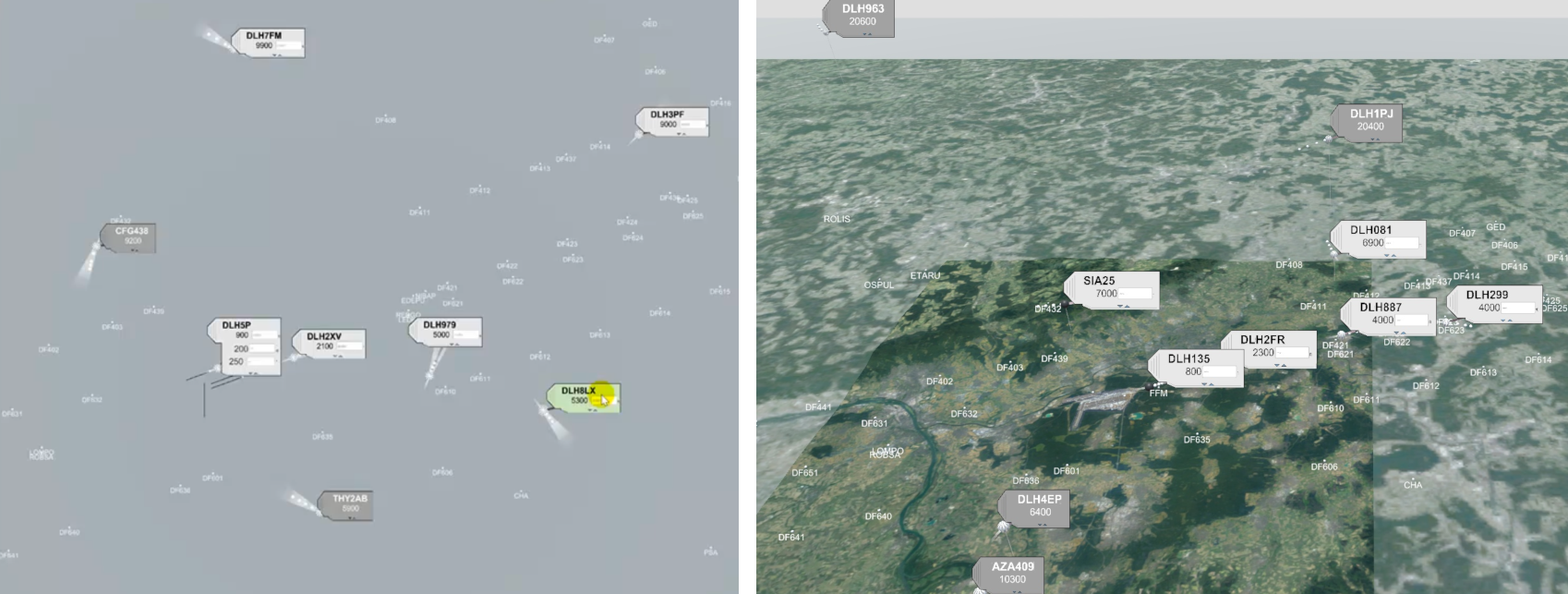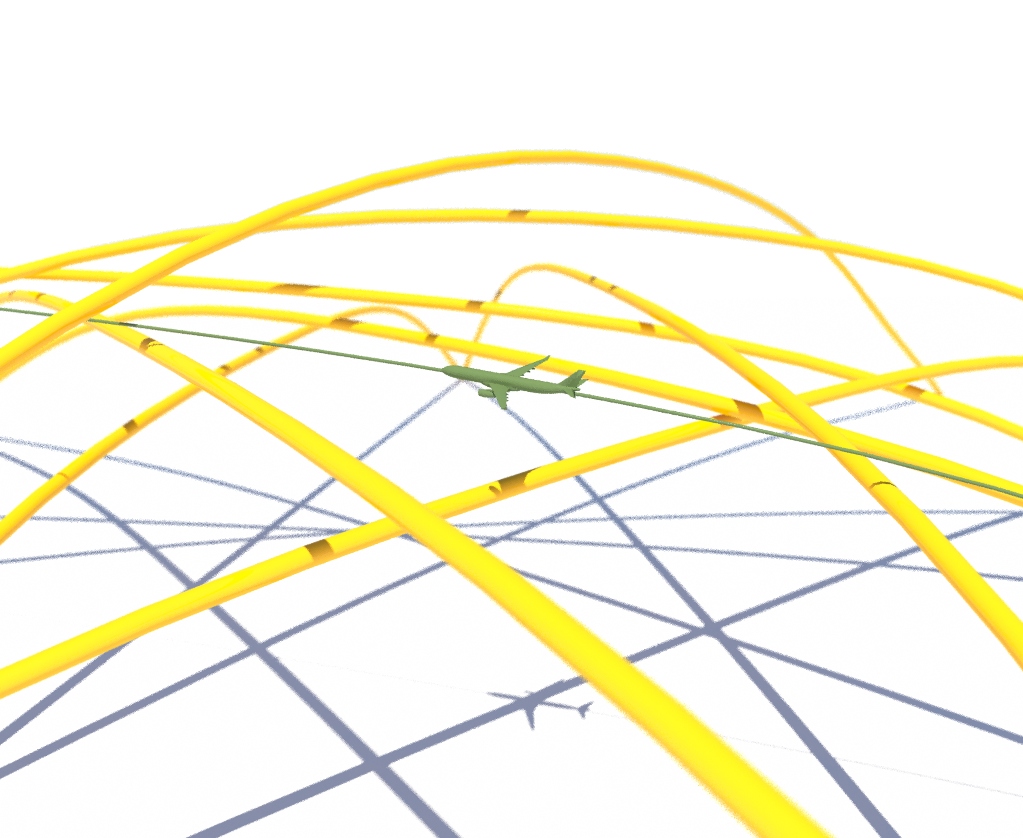The "European ATM (Air Traffic Management) Master Plan" envisages doubling air traffic while reducing operating costs by 40 per cent, reducing fuel by up to ten per cent, increasing safety by a factor of four and reducing delays by 30 per cent. These economic and ecological optimisations are to be achieved, among other things, by flying along 4D trajectories (instead of flight corridors) and further automation of air traffic control.
These measures will lead to major changes in the control and handling of European air traffic and thus in the work of air traffic controllers. In an almost completely automated control centre of the future, today's actively controlling work will be replaced by observing or controlling activities. Modern multi-modal interfaces, whose visual information design, localisation, optionality and permanence could better cover future requirements, will replace today's radar. Such massive changes require the close involvement of users (controllers) in the design and development process of future air traffic control systems.


